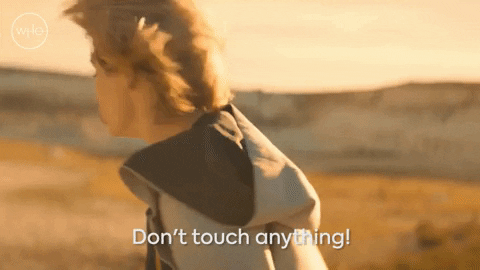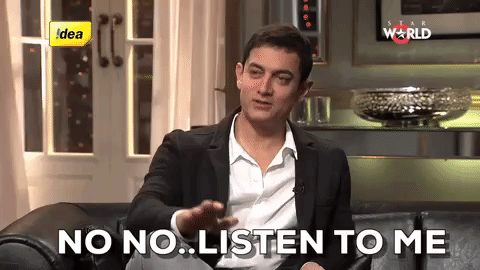You’ve probably heard this before—change is changing. But what exactly does the cliché mean? To find out, let’s take a look at the history of change management.
We’ve shifted from legacy software to the cloud. With this shift, change management has adapted. Change used to be a large overhaul once every couple of years with clear objectives and a solid endpoint. Once everyone was on Windows 2007, for example, the change initiative was complete. Getting people to adopt this change was simple; command and control was enough.
The digital age has changed everything. Gartner says that employees experience 3 major changes each year. Compare this to 1.75 changes per year in 2012.
On top of that, according to Forbes Insights survey respondents, 38% of employees see change as too much of a threat. Change is a heavy burden, and change burn-out is a real hazard.
70% of change programs fail to achieve their goals – in large part due to employee resistance.
It makes sense. People have been asked to adopt new software, methods, and mindsets without compelling explanation. Why should they use Microsoft’s OneDrive instead of Google Drive, or Microsoft Teams instead of Slack? All they see is an imposing threat to their productivity and established workflows.

So, how should change management work?
The answer is empathetic communication and collaboration. Don’t think about the impending changes as bad news. Rather, view those changes as an opportunity to build unity, understanding, and contribution within your team.
Change also gives you the chance to further define and explain business objectives and empower your employees to achieve those objectives. By including your team in the education and planning stages of change management, they feel like they’re partially accountable for helping the change initiative succeed. Their new perspectives will patch holes you might have missed in your initial plans.
Start laying the foundations for this model now, if you haven’t already. As mentioned earlier, change is changing. Change initiatives are no longer a fixed project with a beginning, middle, and end. It’s an ongoing process that might never really have an end.
If you’re like us, “never-ending” is a little daunting. A forever-long project? Talk about exhausting. A paradigm shift will resolve this uneasy feeling.
The larger change initiative (think digital transformation and similar concepts) will be a forever-long endeavor. Phrases like ‘digital transformation’ and ‘technology adoption’ can be very ambiguous terms.
How do you solidify these change concepts?
By creating clear milestones to achieve within the initiative. Instead of one big hoorah—one big objective—think of change as a lot of small successes. Like taking the stairs instead of trying to jump up an entire floor.
Here’s another analogy. Let’s say someone brought you to a building and said, “Alright team, we’re gonna climb this 20-story building.” Your initial reaction might be to ask why. Responses like “Because it will help us achieve our goals” or “It’s an initiative the higher-ups are pushing” or “I don’t like it either” are not very satisfying. You’ll probably resist or get tired of the climb after a while.
On the flip side, let’s say this person brought you into the building and said, “Okay, our objective is to get to the top of this building in order to get a better view of the city. The first thing we need to do is get to the first floor. I have some ideas on how to get up there, but I’d also like to hear your feedback and get some ideas from you.”
Suddenly the 20-story building isn’t as much of a chore. You’re involved in the process. Maybe you even suggest something like an escalator to make the process easier and less painful.

Using small milestones also allows you to change your strategy from floor to floor. Maybe a ladder works from the first floor to the second, but you need a spiral staircase to get to the third floor. By giving your plans flexibility, you give yourself the freedom to pick the right solution for the unique objectives you have.
Easier said than done, right?
It takes understanding within your team to get the most out of your efforts. Disagreements are inevitable; conflict resolution is a must.
Dr. James Hollis, a famous clinical psychologist and author, says that “The single largest cause of conflict between two persons is that they are operating from different typological orientations.”
We all communicate differently, and that’s not a surprise. It’s often challenging to pinpoint different methods of communication. The way personality types communicate with one another is a disaster waiting to happen—unless you understand how they interact.
According to Robert and Dorothy Bolton, there are 4 main personality types within a professional environment. Most of us have aspects of all 4 personalities, but everyone tends to lean towards one.
Let’s take a quick look at the four personalities, then how to implement your newfound knowledge.
The Analytical
Analytical personality types are very neat, precise, and logical. They tend to set very high standards for themselves and will thoroughly research a project before executing it. They’re thoughtful, methodical, and careful. If they’re going to do something, they’re going to do it right.
On the flip side, this personality’s careful tendencies can lead to over-analysis and indecision. They also may come across as judgmental or moody.
The Driver
Those in this personality type are natural leaders. Drivers are direct, active, and determined. They’re the visionaries. They move quickly on projects and thrive on results. They love a challenge. Keeping busy is a must, and they hate seeing a project sit stagnant.
Drivers are prone to sarcasm, and their determination may end up coming across as insensitive, harsh, or dictatorial.
The Amiable
The most liked in the office, this personality type is patient, quiet, and friendly. They will try to avoid conflict at all costs. They’re the peacemakers. Amiable types are inoffensive, easy-going, and genuinely care about the people they’re around.
This personality’s aversion to conflict leads to passive-aggressiveness. They’re easily overwhelmed and can lose sight of the task at hand.
The Expressive
These guys are the fun-lovers! If you need to generate excitement for a project, this person is the one to go to. They’re outgoing, charismatic, and optimistic. They’re big-picture thinkers.
Although this personality type is great at coming up with ideas, they’re not great at making those ideas a reality, and they lack organization.
These personalities all play off each other, so it’s insanely beneficial to have a mixture on your team. However, it’s difficult to navigate the communication conflicts that arise.

Use these tips to avoid conflict and optimize collaboration:
- When talking to the Analytical, be patient and allow them time to think things over. Rather than extending an order, ask for cooperation or input.
- Task-driven conversation is appreciated by the Driver. A reluctance to work can be very frustrating for this personality.
- The Amiable can be easily overwhelmed. Try your best to not overload information. This type responds well to kindness and consideration.
- Include the Expressive in your conversations. This personality loves to be a part of whatever is happening. And try to have a good sense of humor; they’ll appreciate it.
Get laser-focused with these change-management tips:
- Use Expressive personality types to get others excited about the change.
- Explain yourself! Talk about why the change is happening and the improvements that come with it. This gives Analytical types the information they need to support the change.
- HBR says, “Giving people multiple opportunities to take in and process the announcement is essential for thorough understanding.” The Amiable type needs this to process the information without being overwhelmed.
- Incorporate people in the planning stages, especially the Driver. You’d be surprised at what your team members come up with.
Change is hard and getting people on board is the hardest part. By implementing these strategies, expect less resistance as you transition to a culture of change.
How do you help your team build enthusiasm for change? Tweet us your ideas @BrainStormInc.


